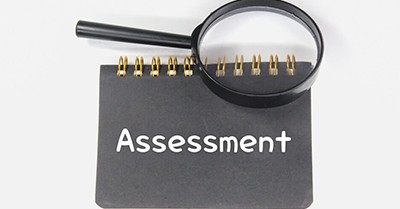As services prepare for upcoming assessment and rating, educators and leaders often seek clarity on what assessors typically observe, review, and discuss during visits. This article outlines common areas of focus, documentation requirements, and practical considerations to support services in demonstrating quality practice and compliance.
Common Areas of Focus During A&R
Assessment and Rating under the National Quality Framework typically involve observation, documentation review, and discussion across the seven National Quality Standards.
| Focus Area | What Assessors Observe | Dos | Don'ts |
|---|---|---|---|
| Practice & Interactions | Educator-child engagement, intentional teaching, responsiveness | Use children’s interests to guide learning; narrate your thinking | Avoid passive supervision or disengaged interactions |
| Documentation | Learning stories, progress tracking, planning cycles | Link observations to EYLF outcomes; show follow-up | Don’t rely on generic templates with no child voice |
| Environment | Safety, accessibility, learning zones | Ensure hazards are addressed; display children’s work | Don’t clutter spaces or neglect outdoor supervision |
| Compliance | Policies, ratios, WWCC, supervision | Keep records up-to-date; know your policies | Don’t assume “someone else” is responsible |
| Family Engagement | Communication, inclusion, cultural responsiveness | Share learning with families; invite feedback | Don’t treat families as passive recipients |
| Reflective Practice | Team discussions, critical reflection, improvement planning | Document team reflections; show growth over time | Don’t skip reflection or treat it as a tick-box |
National Quality Areas
| Quality Area | Examples of What Assessors May Observe or Review |
|---|---|
| QA1: Educational Program and Practice | Planning cycle, child engagement, intentional teaching |
| QA2: Children’s Health and Safety | Supervision, hygiene practices, incident records |
| QA3: Physical Environment | Safety, accessibility, learning spaces |
| QA4: Staffing Arrangements | Ratios, qualifications, continuity of care |
| QA5: Relationships with Children | Interactions, emotional support, respect |
| QA6: Collaborative Partnerships with Families and Communities | Communication, inclusion, cultural responsiveness |
| QA7: Governance and Leadership | Policies, QIP, staff induction, compliance systems |
Documentation and Evidence: What Assessors May Review
During A&R, assessors typically seek documentation that demonstrates alignment with the NQS, the EYLF, and the service’s policies and procedures. This includes:
Educational Program & Practice (QA1)
- Planning cycle evidence: Observations, analysis, planning, implementation, and reflection
- Learning documentation: Learning stories, portfolios, group observations linked to EYLF outcomes
- Intentional teaching records: Notes showing how educators plan and respond to children’s interests
- Critical reflection logs: Team reflections on practice, pedagogy, and outcomes
Health, Safety & Risk (QA2–QA3)
-
Incident, injury, illness, and trauma records
-
Risk assessments: For excursions, high-risk activities, and environmental hazards
-
Daily safety checks: Playground inspections, cleaning logs, hazard identification
Governance & Leadership (QA7)
-
Quality Improvement Plan (QIP): Current, active, and reflective of service goals
-
Policy and procedure documentation: Supervision, mobile device use, child protection, staffing
-
Staff induction and training records: Orientation materials, compliance training, role clarity
Family and Community Engagement (QA6)
-
Communication logs: Newsletters, emails, family feedback forms
-
Cultural inclusion documentation: Reflections, planning notes, community engagement records
Further Reading
Assessment and Rating Visit Tips, Tricks and Suggestions
Steps in the Assessment and Rating Process
How To Discuss Practices During An Assessment and Rating Visit
Critical Reflections In The Assessment and Rating Process
Process Of Self-Assessment In An Early Childhood Setting







 As an Educator in Australia, your pay rate falls under the Children’s Services Award 2010. This award states the minimum amount that an employer can
As an Educator in Australia, your pay rate falls under the Children’s Services Award 2010. This award states the minimum amount that an employer can When working as a qualified Early Childhood Teacher (with a university degree) within a service, your rate of pay will come from the Educational Services
When working as a qualified Early Childhood Teacher (with a university degree) within a service, your rate of pay will come from the Educational Services When working as a Diploma Qualified Educator your pay rate is from the Children's Services Award 2010. This Award states your minimum rate of pay
When working as a Diploma Qualified Educator your pay rate is from the Children's Services Award 2010. This Award states your minimum rate of pay When working as a Cert 3 Qualified Educator, your pay rate is from the Children's Services Award 2010. This Award states your minimum rate of
When working as a Cert 3 Qualified Educator, your pay rate is from the Children's Services Award 2010. This Award states your minimum rate of Educational Leaders play a crucial role in their early childhood service by ensuring that the educational program aligns with best practices and supports the holistic
Educational Leaders play a crucial role in their early childhood service by ensuring that the educational program aligns with best practices and supports the holistic In early childhood education and care, ratios are more than a technicality—they are a frontline safeguard. Every child deserves responsive supervision, emotional connection, and developmental
In early childhood education and care, ratios are more than a technicality—they are a frontline safeguard. Every child deserves responsive supervision, emotional connection, and developmental With the new national child safety reforms kicking in on 1 September 2025, early childhood services like yours have a real opportunity to lead the
With the new national child safety reforms kicking in on 1 September 2025, early childhood services like yours have a real opportunity to lead the Here’s a comprehensive Mobile Phone and Smart Watch Policy tailored for early childhood education and care (ECEC) services in Australia, aligned with the latest 2025
Here’s a comprehensive Mobile Phone and Smart Watch Policy tailored for early childhood education and care (ECEC) services in Australia, aligned with the latest 2025 The Sea of Fish Challenge is a national initiative that invites children, educators, families, and communities to create and display fish artworks as a symbol
The Sea of Fish Challenge is a national initiative that invites children, educators, families, and communities to create and display fish artworks as a symbol Across the early childhood education and care sector, educators are sounding the alarm: current staffing ratios are insufficient to deliver safe, meaningful, and developmentally appropriate
Across the early childhood education and care sector, educators are sounding the alarm: current staffing ratios are insufficient to deliver safe, meaningful, and developmentally appropriate


